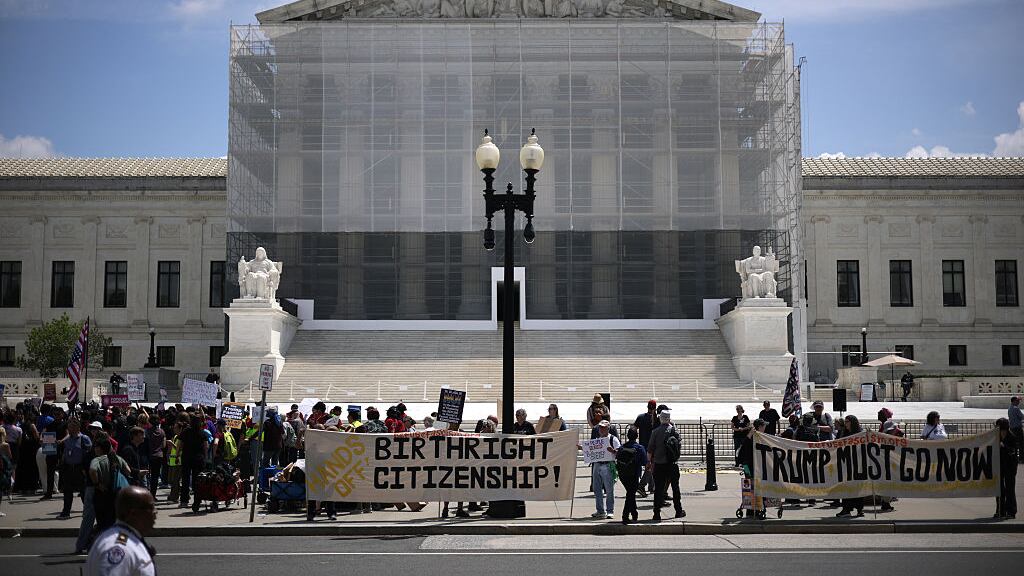The Supreme Court of the United States granted a key victory to President Donald Trump’s government by allowing, for now, his initiative to restrict automatic citizenship by birthright to move forward. The ruling, with a 6-3 vote, authorizes the Executive branch to continue developing its policy while other ongoing legal disputes are resolved.
PUBLICIDAD
The decision is within the framework of the verdict that limits the national effect of precautionary measures imposed by lower courts, restricting them to the states or individuals who have filed specific lawsuits.
PUBLICIDAD
This could allow for the partial implementation of the executive order, although its scope and final execution are still subject to additional judicial reviews.
The constitutional debate on the 14th Amendment
For over a century, it has been widely accepted that the 14th Amendment of the Constitution guarantees automatic citizenship to anyone born on U.S. territory, with limited exceptions such as the children of diplomats.
The new interpretation promoted by President Trump proposes restricting that right only to those who have at least one citizen or legal resident parent.
Although the Court ruling did not address the substance, that is, the legal validity of this interpretation, by limiting national precautionary measures, it allows the far-right Trump administration to advance its agenda. Therefore, the White House celebrated the decision as “an affirmation of the balance of powers,” although among its critics, the view is that the current government is advancing towards authoritarianism.
In statements to the press, Trump described the ruling as “an incredible decision” and “a monumental victory for the Constitution.”
The conservative judges formed the majority opinion. Justice Amy Coney Barrett, nominated by Trump, argued that lower courts should avoid exceeding their authority by imposing overly broad restrictions. As she explained, injunctions should be limited “only to the extent necessary,” leaving open the possibility for certain states to achieve broader measures if justified by their claims.
The policy on birthright citizenship, signed by Trump on the first day of his second term, has been blocked by courts in several states, including Maryland, Massachusetts, and Washington.
Currently, the executive order is also blocked in the state of New Hampshire by a separate lawsuit, and the Court indicated that it will technically go into effect in 30 days. New Jersey’s Attorney General, Matthew Platkin, expressed skepticism about the possibility of the policy being fully implemented and reiterated his state’s commitment to continue opposing it legally.
The opinion of the minority judges
The Supreme Court ruling revealed the division among the judges, as the three liberal ones voted against it.
Judge Sonia Sotomayor, in an unprecedented manner, read her dissenting vote from the bench, describing the ruling as “a tragedy for the rule of law.”
“With the stroke of a pen, the president has turned our Constitution into a solemn mockery. Instead of standing firm, the Court surrenders. Because that complicity should not have a place in our legal system, I dissent,” Sotomayor concluded.
The liberal judge Ketanji Brown Jackson also stated in her separate opinion that the ruling represents “an existential threat to the rule of law”.
